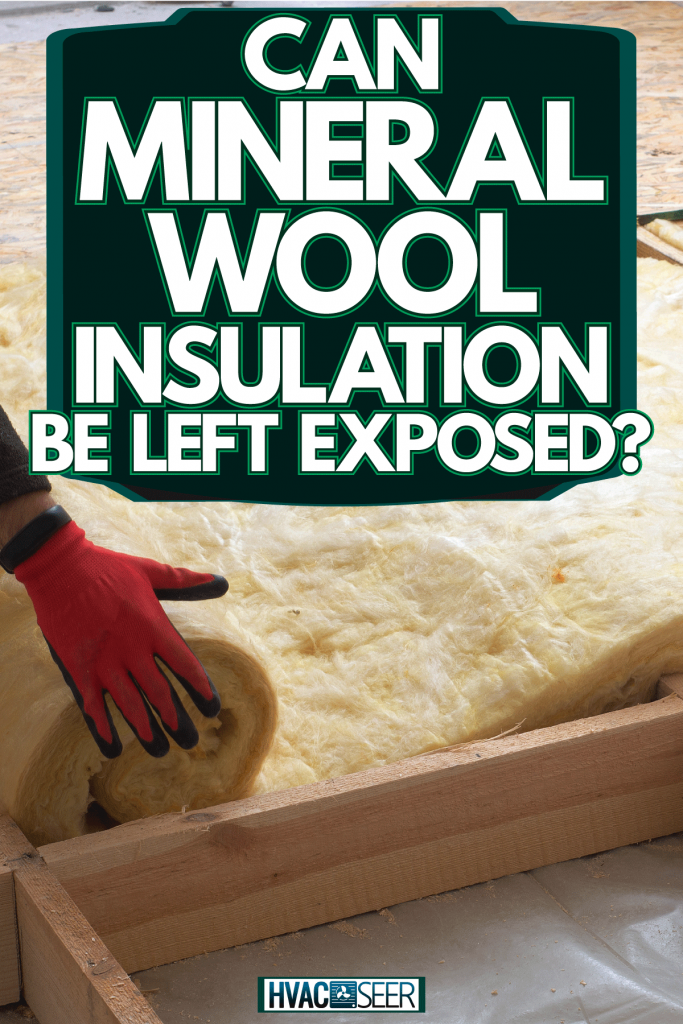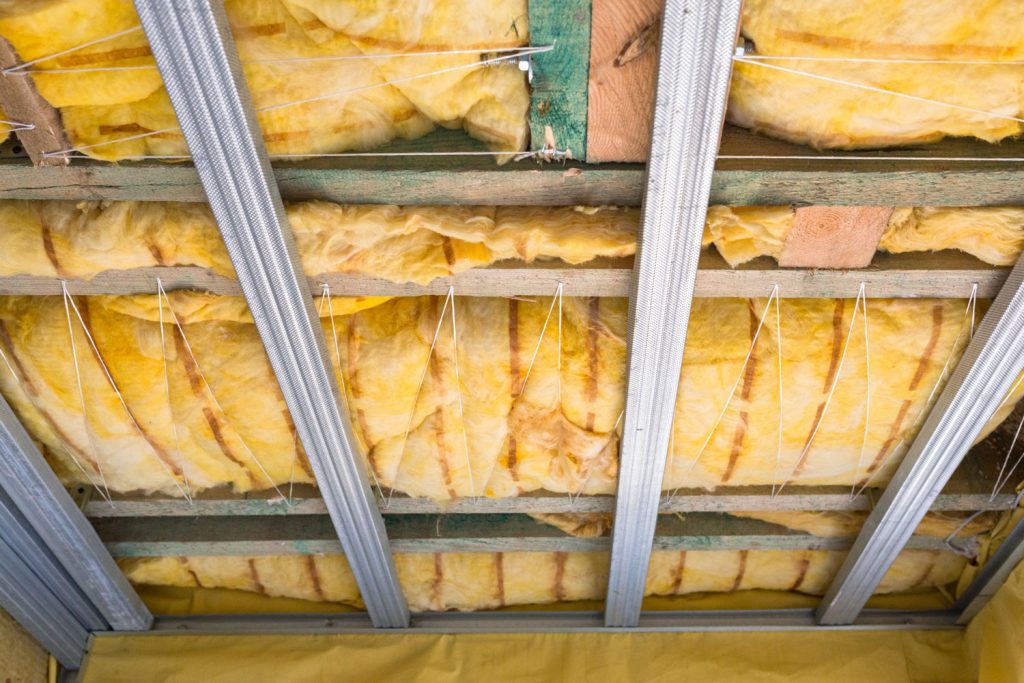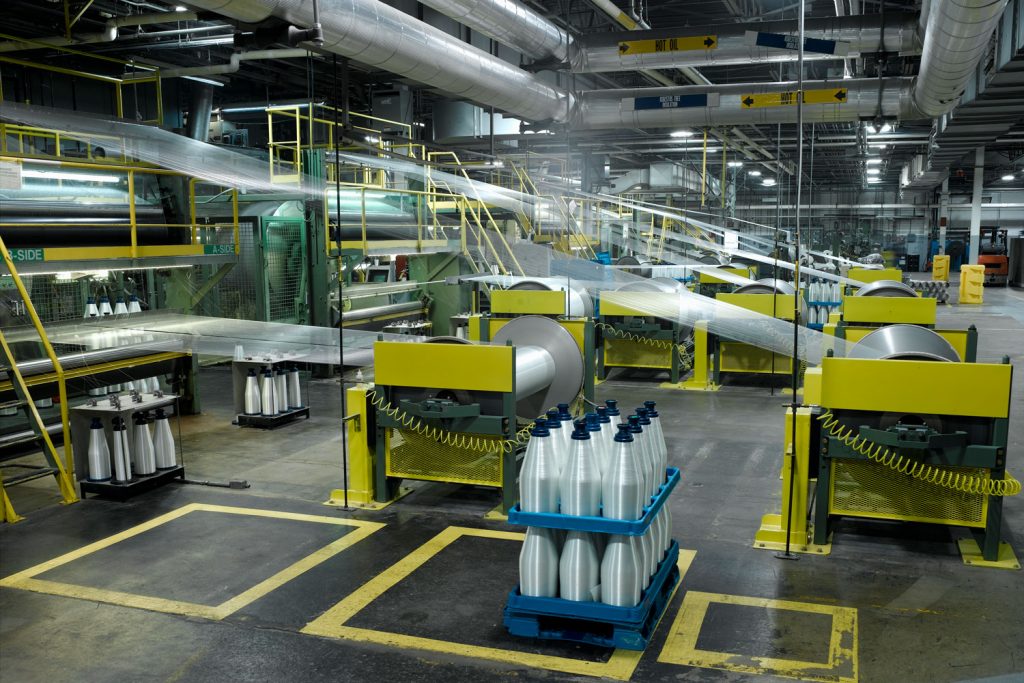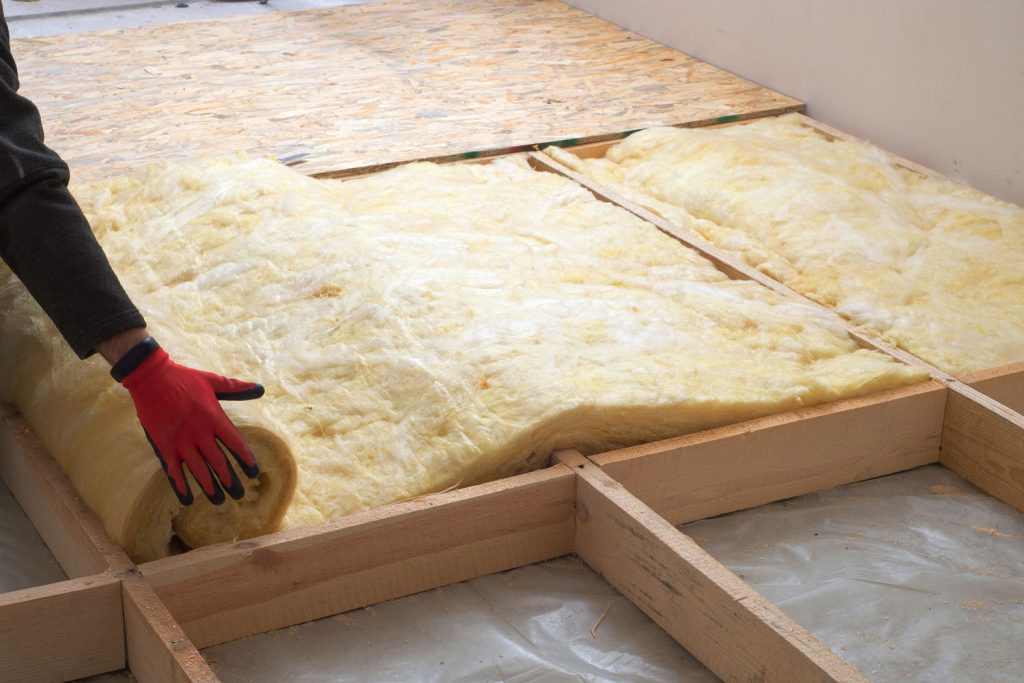Do you have exposed mineral wool insulation in your home or business? Are you wondering if this is a safe scenario and considering the possibility of covering it up. We searched through top-rated sources to bring you the best answer. See our findings below.
It is completely safe to leave mineral wool insulation exposed. Additionally, mineral wool is extremely durable, resisting fire, water, mold, and deterioration. However, if damaged, it can begin to deteriorate, and particles may become airborne.
Don't stop reading yet. There is still a lot you need to know about mineral wool insulation. Stick around as we discuss its R-value, what happens if it gets wet, can it mold, and much more.

Can Mineral Wool Insulation Be Left Exposed?
Mineral wool insulation is both safe and durable. Therefore, it can be left exposed. However, if you plan to leave mineral wool exposed, you should ensure that the environment is properly equipped to keep your insulation from getting wet or becoming damaged in any other way.

For example, if you are installing mineral wool insulation in the roof and walls of a leaky barn, it will need to be enclosed to prevent damage. Home and business attics that do not leak, on the other hand, are instances in which the mineral wool insulation can be left exposed. Walls, however, in medium and high traffic areas should not be left exposed.
What is Mineral Wool?

Mineral wool is a generic term that describes stone wool, glass wool, and slag wool. It is an inorganic fibrous material with uses as insulation in homes, businesses, and factories. It is available in several forms and densities, including blow-in insulation and batt.
Mineral wool is comprised of leftover factory materials such as slag and cullet. Rock wool is made up of raw materials such as basalt, diabase, and dolomite. On the other hand, sand, soda ash, and limestone help create glass wool. Manufacturers melt down these materials at high temperatures and then spin them into a cotton-like substance.
Click here to see this product on Amazon.
Benefits of Mineral Wool
Since mineral wool is comprised of leftover materials from factories and such, it is environmentally friendly. Not only does this save millions of items from going into landfills, but it also reduces energy use during production. In addition to this, mineral wool is extremely durable and offers the following benefits to consumers.
- Excellent Insulating Qualities
- Noise Reduction
- Fire Resistant
- Water and Mold Resistant
- Saves Energy
- Long Lifespan
Easy Installation and Excellent Insulation
Although fiberglass insulation is less expensive, mineral wool has better insulating qualities, and it's easier to install. Unlike fiberglass, mineral wool comes in a wide range of densities. This prevents it from flopping around when you are trying to place it into wall cavities.
When installing mineral wool, you can cut it to fit around obstacles such as pipes and outlets. Fiberglass, on the other hand, is too flimsy for carving. Additionally, mineral wool provides excellent thermal conductivity - a material's ability to transfer heat through itself. It also traps cool air inside, making for more comfortable summers.
Noise Reduction
Do you have children, pets, and neighbors who create too much noise in your home? According to the European Insulation Manufacturers Association (EURIMA), mineral wool insulation is known to reduce noise decibels in your home by up to 50dc by reducing sound absorption and transfer.
Fire Resistant
The types of materials that construct our homes can make them more susceptible to fires. This includes the type of insulation we use. Fortunately, mineral wool is non-combustible and won't ignite until it reaches at least 1,800 degrees Fahrenheit, giving firefighters more time to arrive on the scene before the house is completely in flames.
Water-Resistant
In addition to being fire-resistant, mineral wool is also water-resistant. Although this does not mean that mineral wool cannot become wet, no matter how much water comes into contact with it, the water will not absorb into its fibers. As such, you can dry it out and continue use without consequence.
Saves Energy
We have already concluded that mineral wool insulation is environmentally friendly. Since it is made up of mostly recycled materials, this lessens the energy used during the manufacturing process. This is because factories do not have to create the ingredients that go into making mineral wool.
Another way mineral wool saves energy is by lessening the amount of heat and air conditioning consumers use in their homes and businesses. Heat has a natural tendency to travel to colder areas. However, mineral wool blocks heat inside, keeping buildings warmer during the winter and colder during the summer, lessening the amount of heating and cooling needed.
Long Lifespan
Mineral wool is extremely durable and does not have a tendency to degrade. This, combined with its fire and water-resistant properties, gives it a long lifespan. In general, mineral wool insulation will last for the life of your home or other building. However, mineral wool is not indestructible. If it sustains damage, it may become airborne or begin to degrade over time.
What Happens When Mineral Wool Insulation Gets Wet?
Although mineral wool is water-resistant, it is not waterproof. Therefore, it is still possible for mineral wool insulation to get wet. If it does become wet, however, the insulation will not absorb the water into its fibers. Instead, it will drain out completely.
If your mineral wool insulation gets wet, you should put it in a dry space with sunlight if possible. You can also hang it vertically, allowing all water to drain. For best results, do not use blow dryers or heaters for the drying process. You can, on the other hand, use fans. According to ROCKWOOL Group, once dry, the mineral wool will regain all its original performance characteristics.
Additional Questions
Here are a few additional questions you may have in relation to mineral wool insulation:
What is the R-Value of Mineral Wool Insulation?
Mineral wool has one of the highest R-values of all insulation types. You can expect a value anywhere from 3.7 to 4.2 per inch of thickness of your mineral wool insulation. For example, if your insulation is five inches thick, the highest R-value you should expect is 21, and the lowest R-value you should expect is 18.5.
Is Mineral Wool Mold Resistant?

Mold requires a wet or damp atmosphere in which to grow. Mineral wool is water-resistant and does not hold water, meaning it does not create the proper environment for mold to grow. Additionally, mold requires organic material as a food source. Since mineral wool is made from inorganic materials, it does not support the growth of mold.
What Insulation is Mold-Proof?
In addition to mineral wool, fiberglass insulation is also mold-proof. Although fiberglass is not moisture resistant and can absorb water, it is inorganic; therefore, it cannot act as a food source for mold spores. Additionally, any foam material, such as foam board insulation or spray foam insulation, is also mold-proof.
It's worth noting that cellulose insulation is mold-resistant to a certain degree. It has a borax coating, which is a fire retardant that also resists mold. However, if you install cellulose insulation into a humid or damp area, the borax will begin to diminish, and mold will begin to grow. Likewise, if cellulose insulation gets wet, the borax will wash away, allowing mold to thrive.
Is Mineral Wool Insulation Flammable?

Mineral wool and fiberglass insulations are non-combustible. However, this does not mean they cannot catch on fire. Although these materials can still catch fire, they will not do so until temperatures reach a minimum of 1,800 degrees Fahrenheit.
Mineral wool insulation is a fire-stopper and can even be part of a commercial building's fire safety protection measures. In comparison, spray foam will ignite at 700 degrees Fahrenheit. Cellulose, on the other hand, is extremely flammable and considered to be a fire hazard.
Conclusion

Mineral wool is safe as well as mold-resistant and extremely durable. These properties make it possible to leave mineral wool insulation exposed with little worry. However, you'll need to make sure the exposed material is in an area that is not susceptible to damage, as this can decrease its lifespan.
If you have more questions or concerns about insulation for your home or business, check out these other informative posts on our blog:
Does Cellulose Insulation Need A Vapor Barrier?

